TOP 10 SILENT KILLER DISEASES OF WOMEN; WHAT EVERY WOMAN SHOULD KNOW
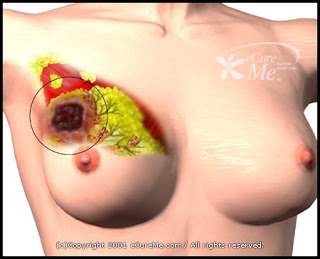
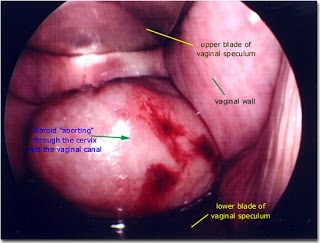
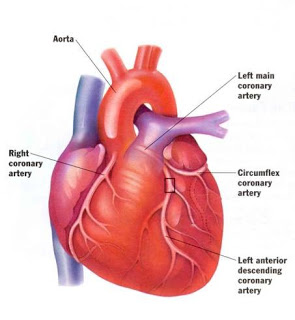
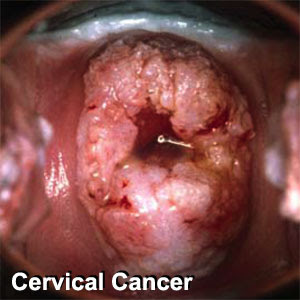
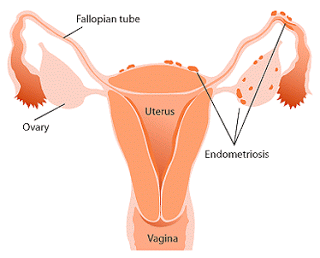
Many diseases are silent killers because of the fact that they produce minimum or no symptoms in the early stages and are capable of causing death if not treated. And because of the lifestyle of most people in this part of the world, there has been an increase in the number of deaths caused by these killer diseases. Over thousand of lives have been lost recently to these deadly diseases. Most of the symptoms are always very mild at an early stage and as such, regular medical checkups and early diagnosis of unexplained or vague symptoms is very vital for women above 40. In this report, City Fashion Editor BOLA AKINBOADE brings to you the Top 10 killer diseases of women.
HEART DISEASES
Heart Disease is the No.1 silent killer diseases. It kills more people around the world than other diseases. Although men are more prone to heart disease than women, it is the most widely recognized cause of death in women. It is the biggest killer of women above 50 years old. Studies revealed that women sure have a very definable advantage over men in terms of heart diseases, but women over 50 years have the same risk of having a heart attack, stroke or any other coronary disease as men do. At this age, women have a greater risk of dying from it.
People who are at risk are those who have a family history of heart related diseases. Recognition of the problem often occurs too late and by the time most people realize that they are suffering from heart diseases,it would have escalated to an advanced stage that poses a treatment challenge for physicians. Often, the onset of the illness only comes to light when the patient has already been afflicted with a stroke or heart attack. Women will usually notice the following when there is an underlying heart disease: profound fatigue, difficulty breathing, feeling dizzy, nausea, vomiting, profuse sweating, pain or discomfort in the neck, shoulder blade or upper back and burning abdominal pain .
When a women has been diagnosed of a heart disease or having a heart attack, they are treated with a different medication from that of men. Research has proven that some anticoagulants work better for men than women. Both drug and surgery treatment protocols are designed for the elimination of heart problems and the restoration of proper heart function. The success of these developments is documented by the sharp decline of fatalities due to heart diseases.
BREAST CANCER
Breast Cancer is a malignant Cancer or tumor that forms in tissues of the breast, usually the ducts (tubes that carry milk to the nipple) and lobules (glands that make milk). It occurs in both men and women, although male breast cancer is rare. Breast cancer is the most common cause of cancer in women and the second most common cause of cancer death in women.
Breast cancer affects one in 8 women, especially ones at child bearing age. Breast cancer kills more women than any form of cancer. It is the most common cause of death in women between the ages of 45 and 55.
No one knows why some women get breast cancer, but there are a lot of risk factors which include: age, the chances of getting breast cancer rises as a woman gets older; genes, women who have family members with breast or ovarian cancer may wish to be tested; personal factors. Other risks include being overweight, using hormone replacement therapy, taking birth control pills, drinking alcohol, not having children or having your first child after 35 e.t.c Some of the symptoms of breast cancer include: change in how the breast or nipple feels, a lump or thickening in or near the breast or in the underarm area , nipple tenderness, a change in how the breast or nipple looks, a change in the size or shape of the breast, a nipple turned inward into the breast, the skin of the breast, areola, or nipple may be scaly, red, or swollen. It may have ridges or pitting so that it looks like the skin of an orange.
Early stages of breast cancer usually does not cause pain , that might explain why it so easy for it to do more damage before its been diagnosed. Early diagnosis plays a major role in its treatment. Treatment options for breast cancer may involve surgery (removal of the cancer alone or, in some cases, mastectomy), radiation therapy, hormonal therapy, and/or chemotherapy.
OVARIAN CANCER
Ovarian Cancer is a Cancerous growth arising from an ovary (one of a pair of female reproductive glands in which the ova, or eggs, are formed). Most ovarian cancers are either ovarian epithelial carcinomas (cancer that begins in the cells on the surface of the ovary) or malignant germ cell tumors (cancer that begins in egg cells).
Ovarian cancer is the seventh most common cancer in women and the fifth leading cause of cancer deaths in women. It frequently does not result in symptoms until the cancer has spread extensively. Less than one-third of ovarian cancers are detected before they have spread outside of the ovaries.
Possible early ovarian cancer symptoms include the following: Bloating, Pelvic or abdominal pain, Urgent or frequent urination, difficulty eating or feeling full very quickly. But, as the cancer grows, symptoms may include: Pressure or pain in the abdomen, pelvis, back, or legs, A swollen or bloated abdomen, Nausea, indigestion, gas, constipation, or diarrhea, Feeling very tired all the time amongst others.
For treatment, most women have surgery and chemotherapy. Radiation therapy is rarely used. Cancer treatment can affect cancer cells in the pelvis, in the abdomen, or throughout the body
CERVICAL CANCER
Cervical Cancer is a Cancer that forms in tissues of the cervix (the organ connecting the uterus and vagina). It is usually a slow-growing cancer that may not have symptoms but can be detected with regular Pap tests (a procedure in which cells are scraped from the cervix and looked at under a microscope). Cervical cancer is almost always caused by human papillomavirus (HPV) infection. The virus cancer link works by triggering alterations in the cells of the cervix, resulting to the development of Cervical Intraepithelial Neoplasia, which can lead to cancer. Women who have many sexual partners (or who have sex with men who had many other partners) stand a greater risk.Early stages of cervical cancers usually don’t cause symptoms. When the cancer grows larger, women may notice one or more of these symptoms: abnormal vaginal bleeding, bleeding that occurs between regular menstrual periods, bleeding after sexual intercourse, douching, or a pelvic exam, menstrual periods that last longer and are heavier than before, bleeding after going through menopause, increased vaginal discharge, pelvic pain, pain during sex.
Doctors recommend that women help reduce their risk of cervical cancer by having regular Pap tests. A Pap test (sometimes called Pap smear or cervical smear) is a simple test used to look at cervical cells. Pap tests can find cervical cancer or abnormal cells that can lead to cervical cancer.
Finding and treating abnormal cells can prevent most cervical cancer.
Women with cervical cancer have many treatment options. The options are surgery, radiation therapy, chemotherapy, or a combination of methods.
The choice of treatment depends mainly on the size of the tumor and whether the cancer has spread. The treatment choice may also depend on whether you would like to become pregnant in the future.
COLON CANCER
This is a Cancer that forms in the tissues of the colon (the longest part of the large intestine). Most colon cancers are adenocarcinomas (cancers that begin in cells that make and release mucus and other fluids).The colon is the part of the digestive system where the waste material is stored. Even though this cancer kills more men, the rate at which it kills women has been on the rise lately. It is the fourth leading cause of cancer in females. Colon cancer is not contagious. Some people are more likely to develop colon cancer than others. Factors that increase a person’s risk of colorectal cancer include high fat intake, a family history of colorectal cancer and polyps, the presence of polyps in the large intestine, and chronic ulcerative colitis.
Most colon cancers develop in colon polyps. Therefore, removing benign colon polyps can prevent colorectal cancer.
Symptoms of colon cancer are numerous and nonspecific. They include fatigue, weakness, shortness of breath, change in bowel habits, narrow stools, diarrhea or constipation, red or dark blood in stool, weight loss, abdominal pain, cramps, or bloating. Other conditions such as irritable bowel syndrome (spastic colon), ulcerative colitis, Crohn’s disease, diverticulosis, and peptic ulcer disease can have symptoms that mimic colorectal cancer. Colon cancer can be present for several years before symptoms develop.
Surgery is the most common treatment for colon cancer. During surgery, the tumor, a small margin of the surrounding healthy bowel, and adjacent lymph nodes are removed.
FIBROID
Fibroid tumors are solid tumors which are made of fibrous tissue. These benign (non-cancerous) tumors are found in most cases, in the uterus of women in their 30’s and 40’s.
Most often fibroids occur as multiple tumor masses which are slow-growing and often cause no symptoms.
No one is sure why fibroid tumors develop, but some facts seem clear: fibroid tumors do not develop before the body begins producing estrogen during the onset of menstruation , fibroid tumors will continue to grow while estrogen is present, they will grow very quickly during pregnancy when the body is producing extra estrogen , the tumors often shrink and disappear after menopause when the body stops producing estrogen ,a woman will almost never develop fibroid tumors after menopause.
Although most fibroids cause no symptoms, the estimated 25 percent of women who do have symptoms may have abnormal bleeding, pain during menstruation, and as the fibroid tumors grow larger, women will often experience a swollen abdomen.
Larger fibroids may cause frequent urination or an inability to control your bladder, either the ability to control the urge or in severe cases, some women may find it difficult to urinate at all. If a fibroid extends towards a woman’s back it may push on the bowels, causing constipation and a backache.
If the fibroid tumors are severe enough that they cause certain symptoms, surgery is often, the recommended treatment.
The sad fact is that because fibroids do grow back, most women will eventually have to face a hysterectomy. Removing the uterus is the only permanent way to effectively relieve most women of fibroids.
PELVIC INFLAMATORY DISEASE (PID)
Pelvic inflammatory disease is an infection of the uterus lining, fallopian tubes, or ovaries. Most cases of pelvic inflammatory disease are caused by bacteria that move from the vagina or cervix into the uterus, fallopian tubes, ovaries, or pelvis.
The most common cause of PID is sexual contact without using a condom or other protection. This is called a sexually transmitted disease (STD). Chlamydia and gonorrhea are the two bacteria that cause most cases of PID.
However, bacteria may also enter the body during some surgical or office procedures, such as: childbirth, endometrial biopsy, insertion of an intrauterine device (IUD), miscarriage, therapeutic or elective abortion .
The most common symptoms of PID include: fever (not always present; may come and go) ; pain or tenderness in the pelvis, lower abdomen, or sometimes the lower back ; vaginal discharge with abnormal color, texture, or smell ; bleeding after intercourse, chills, fatigue, frequent or painful urination, increased menstrual cramping , irregular menstrual bleeding or spotting , lack of appetite, nausea, with or without vomiting, no menstruation and painful sexual intercourse.
A number of different antibiotics may be used for treating this type of infection
Complicated cases that do not improve with antibiotics may need surgery.
ENDOMETRIOSIS
Endometriosis is another silent killer disease of women. It is the growth of cells similar to those that form inside the uterus (endometrial cells), but in a location outside of the uterus. Endometrial cells are the same cells that are shed each month during menstruation. The cells of endometriosis attach themselves to tissue outside the uterus and are called endometriosis implants. These implants are most commonly found on the ovaries, the Fallopian tubes, outer surfaces of the uterus or intestines, and on the surface lining of the pelvic cavity. They can also be found in the vagina, cervix, and bladder, although less commonly than other locations in the pelvis
Endometriosis affects women in their reproductive years. The exact prevalence of endometriosis is not known, since many women may have the condition and have no symptoms. It is one of the leading causes of pelvic pain and reasons for laparoscopic surgery and hysterectomy in this country. While most cases of endometriosis are diagnosed in women aged around 25-35 years, endometriosis has been reported in girls as young as 11 years of age. Delaying pregnancy until an older age is also believed to increase the risk of developing endometriosis.
And why a lot of women have lost their lives lately to this disease is the fact that it is often misdiagnosed as other diseases because of the bleeding factor which it shares in common with other terminal diseases.
Most women who have endometriosis, in fact, do not have symptoms. For those who do experience symptoms, the common symptoms are pain (usually pelvic) and infertility. Pelvic pain usually occurs during or just before menstruation and lessens after menstruation. Some women experience pain or cramping with intercourse, bowel movements and/or urination. Even pelvic examination by a doctor can be painful. The pain intensity can change from month to month, and vary greatly among women. Some women experience progressive worsening of symptoms, while others can have resolution of pain without treatment.
Other symptoms related to endometriosis include: lower abdominal pain, diarrhea and/or constipation, low back pain, irregular or heavy menstrual bleeding, or blood in the urine.
Endometriosis can be treated with medications and/or surgery
DIABETES
Diabetes is another silent killer that is rated as top killer.It has been responsible for a lot of death in women, even though the men are also not left out. The interesting thing about it is that almost one-third are not aware that they have it. Before you come to know that you are suffering from diabetes, this disease can result a lot of high blood pressure and damage the blood vessels. It is a disorder that affects the way your body uses food for energy. Normally, the sugar you take in is digested and broken down to a simple sugar, known as glucose. The glucose then circulates in your blood where it waits to enter cells to be used as fuel. Insulin, a hormone produced by the pancreas, helps move the glucose into cells. A healthy pancreas adjusts the amount of insulin based on the level of glucose. But, if you have diabetes, this process breaks down, and blood sugar levels become too high.
There are two main types of full-blown diabetes. People with Type 1 diabetes are completely unable to produce insulin. People with Type 2 diabetes can produce insulin, but their cells don’t respond to it. In either case, the glucose can’t move into the cells and blood glucose levels can become high. Over time, these high glucose levels can cause serious complications.
There are many risk factors for type 2 diabetes. Some of them come from our family history and genetics, but some can be turned around to help reverse or prevent the disease. Symptoms include; frequent trips to the bathroom, unquenchable thirst, losing weight without trying, weakness and fatigue, tingling and numbness in hands, legs or feet.
Uncontrolled diabetes can lead to death, heart disease, kidney failure, leg infections, and other serious health problems.
LEUKEMIA
Leukemia is cancer that starts in the tissue that forms blood. This is a disease that actually affects children, men and women. The chance of surviving is always very slim if not diagnosed early. Women respond differently to treatment and might lead to other damage of its reproductive system,if proper measure is not taken. In a person with leukemia, the bone marrow makes abnormal white blood cells. The abnormal cells are leukemia cells. Unlike normal blood cells, leukemia cells don’t die when they should. They may crowd out normal white blood cells, red blood cells, and platelets. This makes it hard for normal blood cells to do their work.
People with leukemia are at significantly increased risk for developing infections, anemia, and bleeding.
The symptoms of leukemia depend on the number of leukemia cells and where these cells collect in the body. People with chronic leukemia may not have symptoms. The doctor may find the disease during a routine blood test.
People with acute leukemia usually go to their doctor because they feel sick. If the brain is affected, they may have headaches, vomiting, confusion, loss of muscle control, or seizures. Leukemia also can affect other parts of the body such as the digestive tract, kidneys, lungs, heart, or testes.
Common symptoms of chronic or acute leukemia may include: swollen lymph nodes that usually don’t hurt (especially lymph nodes in the neck or armpit), fever or night sweats, frequent infections, feeling weak or tired, bleeding and bruising easily (bleeding gums, purplish patches in the skin, or tiny red spots under the skin), swelling or discomfort in the abdomen (from a swollen spleen or liver), weight loss for no known reason, pain in the bones or joints
Diagnosis of leukemia is supported by findings of the medical history and examination, and examining blood under a microscope. Leukemia cells can be detected and further classified with a bone marrow aspiration and/or biopsy. Most patients with leukemia are treated with chemotherapy. Some patients also may have radiation therapy and/or bone marrow transplantation.
Unfortunately, chemotherapy may damage the ovaries of an adult woman. Women may have irregular menstrual periods or periods may stop altogether. Women may have symptoms of menopause, such as hot flashes and vaginal dryness. Women who may want to get pregnant in the future should ask their health care team about ways to preserve their eggs before treatment starts.
- EVERYDAY MAKEUP ROUTINE FOR A FRESH AND NATURAL LOOK - April 6, 2024
- MIXING AND MATCHING PATTERNS LIKE A PRO - February 23, 2024
- 10 WARDROBE ESSENTIALS EVERY FASHIONISTA SHOULD OWN - February 11, 2024




This article will assist the internet people for setting up new weblog or even a blog from
start to end.
My page > The Fat Loss Factor Review